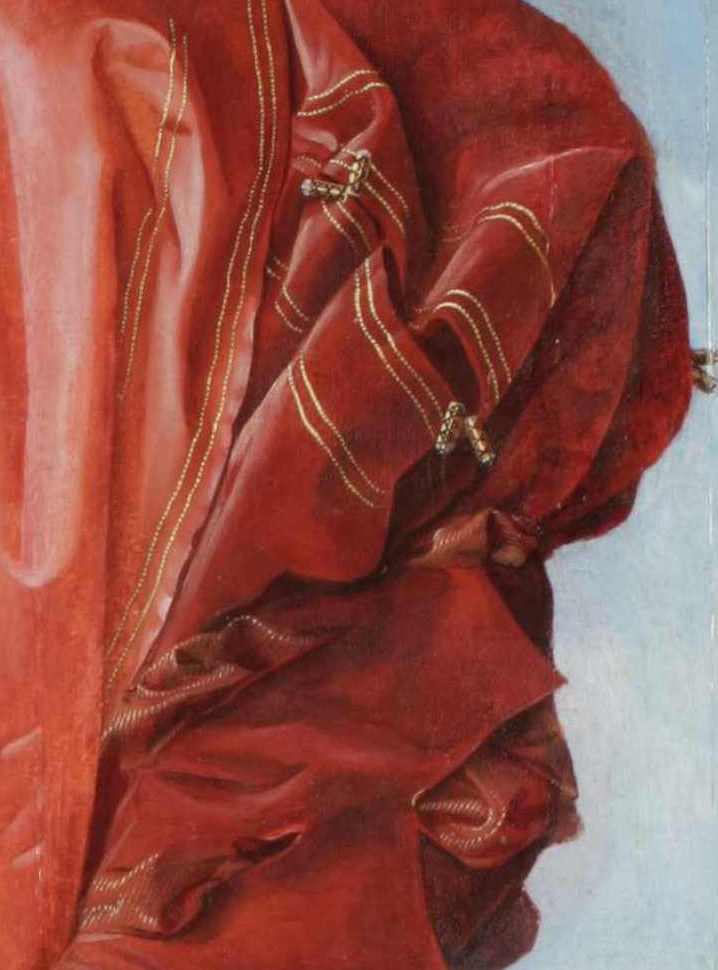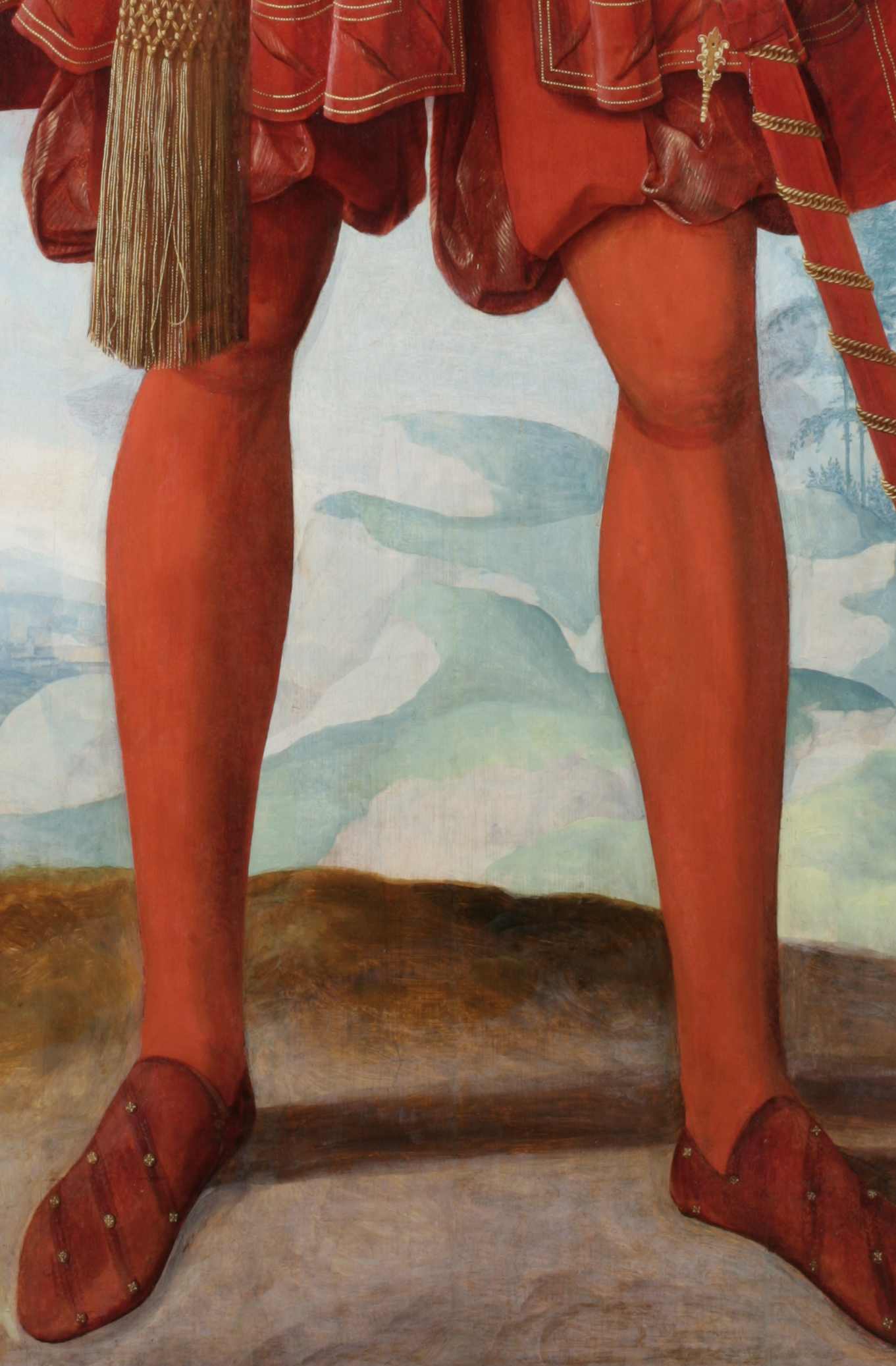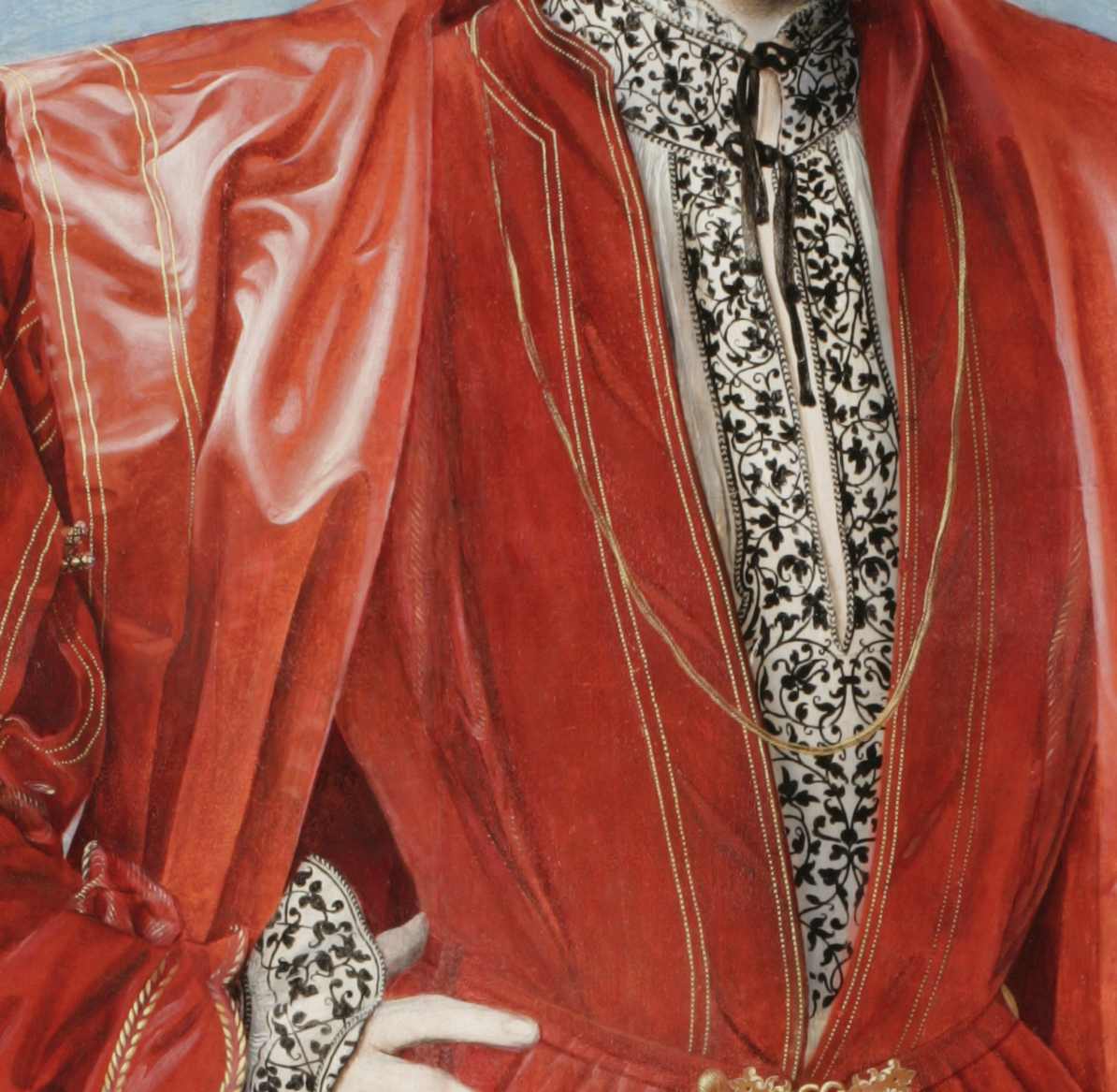Costume
Garments
On the bottom half of his legs the sitter wears lower stocks, which might be made from woven woollen fabric, knitted silk or dyed deerskin. Above these are upper stocks, constructed from panes of alternating types of fabric, one woven with metal thread and the other probably crimson silk velvet. The two garments would have been laced together above the knee to make up the tailored hose.
The fabric shoes are decorated with slashing and buttons. His linen shirt is decorated with foliate blackwork embroidery. The manner in which the clothing has been painted makes the exact combination of garments worn over the shirt hard to interpret.
Normally a man would wear a doublet over his shirt, which would be laced to his hose at the waist. Although such a garment is not apparently visible here, it is possible that one with a very low neckline is being worn beneath the coat. This example has skirts below the waistline and is worn open down the front, evidently to display the fine embroidery on the shirt.
The outermost layer is a gown reaching to mid-thigh with decorative aglets at the shoulders. It is not clear whether the fabric covering the forearm is part of the coat beneath or the gown. These lower sleeves are decorated with ‘pullings out’ – diaphanous fabric woven with gold thread is pulled through slashes in the layer above. Like most gowns at this date, this one appears to be of velvet.
The sheen on the large collar, turned back to reveal the lining of the gown, suggests it is possibly lined with a fabric woven with metal thread. The most expensive fabrics were often reserved for linings.
Colour
The most distinctive feature of this man’s clothing is its colour. Early in the sixteenth century, red clothes were highly fashionable and traditionally associated with wealth and status.
A great variety of shades of red were worn during the Tudor period. Unlike the duller hues, which could be produced more cheaply from plants such as madder (rubia tinctorum), the brightest shades, such as crimson and scarlet, were produced using costly dyes derived from insects foreign to northern Europe, specifically kermes (kermes vermilio) and cochineal (dactylopius coccus).
Fabrics dyed using these sources were particularly prized and in England were limited by sumptuary legislation to those of the highest social status.
While portraits of sitters dressed in one colour are unusual, Henry VIII’s wardrobe accounts reveal that he frequently ordered sets of clothes in one colour, with slight variations in fabric type and decoration.
Such a matching ensemble could be mixed and matched, or worn together to create a powerful visual image: on May Day in 1515, Henry VIII appeared dressed entirely in green velvet, cap, doublet, hose, shoes and everything’.
Nationality
It is very difficult to distinguish national differences in dress across Europe during this period, as elite clothing styles travelled and so were broadly consistent across different countries.
The wide-shouldered, narrow-legged silhouette of the Man in Red was seen in England during the first half of the sixteenth century, but also in other countries such as the Holy Roman Empire (the confederation of states roughly equivalent to modern-day Germany). A yellow and black outfit in Dresden, worn by Prince Elector Moritz, is very similar in style. It dates from c.1545 –50.
The sword and dagger are in northern European style, which was popular and widespread throughout Europe. The very large spherical pommel of the sword is characteristically (although not exclusively) English.










